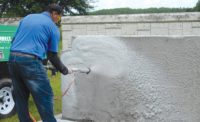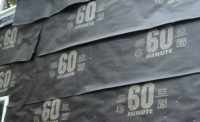Let me begin with a little story: There was an experiment involving five gorillas who lived in a large cage. There was a ladder in the center of the cage, and every day a fresh bunch of bananas was placed high up on top of the ladder. As soon as one gorilla would attempt to get the bananas, the scientist would spray all the gorillas with cold water. This process was repeated when any gorilla tried, and eventually the gorillas all stopped trying.
Some time passed, and the gorillas were still leaving the bananas alone. At this point, the scientists removed the cold water from the experiment and replaced one of the five gorillas with a new one. As soon as the new gorilla saw the bananas it attempted to climb the ladder. The other gorillas attacked him and prevented him from getting the bananas! They didn’t want to get sprayed with cold water again, so they made sure the new gorilla stayed away from the bananas. After a couple of attempts (and attacks), the new gorilla learned to leave those bananas alone.
The scientists then replaced yet another gorilla. The second replacement did the same thing as the first new gorilla, and it too was attacked. Amazingly, even the first new gorilla, who knew nothing about the sprays, took enthusiastic part in the attacks. The process of replacing gorillas was repeated until all five original gorillas had been replaced with new ones. Each time a new gorilla attempted to get the bananas, it would be stopped by the other gorillas.
None of the gorillas in the cage knew why they shouldn’t be climbing the ladder, yet none of them would try again, nor would they allow the other ones to do so. The only reason for their behavior was that it’s just the way things have always been done.
I first read this story in this very magazine many years ago and it stuck with me. In fact, I used to tell the story when I did training seminars on EIFS basics. I always suggested that just because you had always been doing it that way doesn’t mean you were always doing it right. So for this column, I would like to answer a few of the “whys” of proper EIFS installations.
Foam
Most EIF systems use expanded polystyrene foam (EPS). There are some systems that use extruded polystyrene (XPS) and polyisocyanurate (polyiso) because they offer a higher R value per inch. The dimension of EPS is 24 inch by 48 inch and comes in a variety of thicknesses up to 4 inches. This is the maximum board size that when adhered or fastened to a substrate, provides the necessary movement behind the lamina without cracking it. It also allows for an even disbursement of adhesive and a manageable size for proper placement to the substrate. When you use a 4 feet by 8 feet sheet of foam you cannot guarantee that the adhesive is going to have intimate contact with the substrate and you increase the likelihood of cracking at the board joints.
Backwrap
I defined this word as having the mesh start on the back of the foam, and wrap to the face, back-wrap. The reason for backwrapping is to fully encapsulate the foam in the system. It is imperative that an EIF system have 100 percent of the foam covered with basecoat and mesh (This does not apply to the area between the foam and the substrate.) No foam can be exposed to the elements because it will degrade, insects and contaminates can get into it, and it may propagate a fire.
An option to backwrapping, that still encapsulates the foam, is to on-wrap the lamina. An example of this would be at a window opening. Rather than being backwrapped, the lamina would be run continuous from the face of the foam, onto the side and continue onto the framed surface. The foam is fully encapsulated and the lamina serves to further protect the rough opening.
Terminations at Dissimilar Materials
Anywhere an EIF system meets an object that is not part of the system, it requires a sealant joint. Abutting to dissimilar objects like doors, windows, electrical boxes, stone facades, etc., will always require some sort of sealant joint. These edges of system areas will have basecoat and mesh on them which will be the surface to which sealant will adhere. Unlike stucco assemblies, there are no termination pieces that encase the edge and act as sealant adhesion points. The sealant joint size is determined by the amount of anticipated movement.
Termination at Grade
The foam component of an EIF system shall not go below grade, ever. Hydrostatic pressure from the surrounding wet dirt can cause a crack in the lamina thus allowing moisture to wick into the foam and potentially into the structure. Another common malady associated with below grade applications is the infestation of insects. Termites love the warm insulation foam provides and use the foam as a gateway to their food, your structure. They are then hidden from view and may go unnoticed for a long time. When a finished look to grade is desired, one option is to apply the lamina from the foam and continue it onto the surface below, (aka on-wrapping).
Basecoat and Mesh
This layer is the weather resistive barrier. The basecoat is applied to the foam first and then the mesh is embedded into the wet basecoat, one never pins the mesh. Compare this to a steel mesh reinforced cement slab. If all one does is lay the mesh on the ground then pour the concrete, one ends up with a bunch of concrete on top of some steel mesh. For maximum strength the mesh need to be in the center of the slab. The same holds true for the basecoat and mesh layer. If you pin the mesh there won’t be sufficient basecoat behind the individual strands of mesh, ergo a weaker barrier. I used to do demonstrations of this and took many passes of the trowel spreading basecoat over a pinned mesh. Once I pulled the mesh back off, you could see the foam where the mesh was.
Most of the EIFS manufacturers say to double back with a second coat of basecoat after embedding the mesh into the base coat. Many applicators say they are skilled enough to embed with a single pass. I suppose this is achievable by some but for the most part what mostly happens is two things: 1) the basecoat is just thick enough to cover the mesh but when it dries and shrinks back a bit, it leaves tiny pinholes at the corners of each little square, and; 2) the basecoat is applied a little thicker and when it dries gets check cracking from the surface drying faster than the middle. Both occurrences can compromise the integrity of the weather barrier that is basecoat and mesh. It is a good practice to skim a tight second layer. I have found that doing so before the basecoat is completely dry, provides the best results.
Horizontal Surfaces
Never apply the lamina to a completely horizontal surface. Here is a visual for this; In the summer months the sun is further away from the earth than in the winter. The reason it is so hot is because the earth is not tilted as much on its axis so the UV rays hit directly onto our planet.
Conversely during the winter months when the earth is tilted more, the rays bounce off the surface at an angle and less UV is absorbed. The same rule of thumb applied to a horizontal surface of an EIF system. Added to this are the contaminates in our air and the water that falls from the sky as liquid or ice. A horizontal surface will hold all the dirt and/or wetness in place where it can soak into and cause damage to the protective barrier layer. And, when the horizontal surface of a given building exceeds 18 to 24 inches in width, it transforms into another structure known as a roof.
The EIFS industry has gone to great lengths in making the edicts of EIFS installation. Trust that they are well thought out, are proven successful and are not intended to impede the applicator. When you say we’ve always done it that way, that way should be the time proven correct way. Finally, never use a sponge float during EIFS application, why? You know why…







Report Abusive Comment